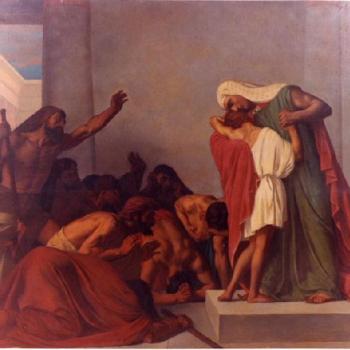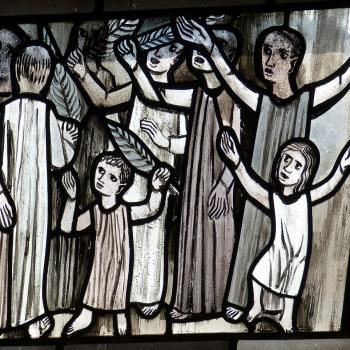 If preachers wish to convey the truth of scripture to our congregations, we must take exegesis seriously. This means that we must pay attention to context as well as the text. When I taught New Testament exegesis to seminarians, I consistently underscored the importance of context. Accurate exegesis requires reading a passage in several contexts, including: the immediate literary context, the context of the whole biblical book, the context of early Christian experience and thought, the context of Greco-Roman culture, the context of Jewish culture and history, and the context of scripture as a whole.
If preachers wish to convey the truth of scripture to our congregations, we must take exegesis seriously. This means that we must pay attention to context as well as the text. When I taught New Testament exegesis to seminarians, I consistently underscored the importance of context. Accurate exegesis requires reading a passage in several contexts, including: the immediate literary context, the context of the whole biblical book, the context of early Christian experience and thought, the context of Greco-Roman culture, the context of Jewish culture and history, and the context of scripture as a whole.
Another Relevant Context
Yet there is another context that begs for the attention of preachers. I was reminded of this truth a few days ago on Christmas Eve. Since I am no longer a parish pastor, I do not get to preach on Christmas Eve. Although I miss the chance of proclaiming the Gospel in such a festive time to such a diverse group of people, I do enjoy sitting with my family on Christmas Eve as we share worship together.
For the past three years, my wife and children have joined my sister-in-law and her family for Christmas Eve Worship. The Christmas Eve service at Westminster Presbyterian Church in Burbank, California is energetic, engaging, and evangelical. As the Christ candle shines from the center of the Advent wreath, the congregation sings the classic carols of Christmas. Then Pastor Paul preaches a concise, content-rich sermon that retells the familiar story of Christ's birth while connecting it to our life today. Following the sermon, we receive Communion and then process outside to sing "Silent Night" with lighted candles.
 In his most recent Christmas Eve sermon, Pastor Paul was explaining that we cannot truly make sense of the birth of Jesus unless we understand that he came to die. Jesus was the Lamb of God who takes away the sin of the world. But, Pastor Paul warned, we must not think of Jesus as a petting zoo lamb: cute, curly-haired, and safe. Rather, Jesus is more like the "Rabbit of Caerbannog, the guardian of the Cave of Caerbannog."
In his most recent Christmas Eve sermon, Pastor Paul was explaining that we cannot truly make sense of the birth of Jesus unless we understand that he came to die. Jesus was the Lamb of God who takes away the sin of the world. But, Pastor Paul warned, we must not think of Jesus as a petting zoo lamb: cute, curly-haired, and safe. Rather, Jesus is more like the "Rabbit of Caerbannog, the guardian of the Cave of Caerbannog."
At this allusion, dozens of people throughout the sanctuary laughed. They got the joke. I dug deeply into the recesses of my memory and pulled out a scene from Monty Python and the Holy Grail, a film that I saw one time more than three decades earlier. I would never have remembered the name of the rabbit in that film, but I did recall that it was guarding a cave. So I thought I knew what Pastor Paul was talking about.
Exegeting Our People
Later, I did a bit of research to confirm my hunch about the Rabbit of Caerbannog, an ironically dangerous killer. I also did some reflecting on Pastor Paul's use of that illustration. He did not allow people to draw the conclusion that Jesus might leap up and bite off their head (as did the Rabbit). Rather, he used the allusion as a humorous way to introduce Jesus as a lamb who is also a lion (Rev. 5).
What impressed me most about Pastor Paul's allusion was how well it connected with the congregation. Frankly, I can't imagine referring to the Rabbit of Caerbannog in any of the contexts in which I have preached. People wouldn't get the joke or the point. (Plus, I'm not even sure how to pronounce the word "Caerbannog.") But Pastor Paul had rightly exegeted his congregation, many of whom work in the entertainment business, and thus would be likely to make sense of an allusion to Monty Python and the Holy Grail (or, perhaps, the musical Spamalot, in which the famed Rabbit makes an appearance).
If our calling as preachers is to help our people hear God's Word in a way that touches their minds, hearts, and daily lives, then we must be sure to exegete both the biblical text and our congregations. If the example of Pastor Paul doesn't persuade you of this, you might consider the case of the Apostle Paul. His letters not only teach divinely inspired truth, but also apply this truth to the real-life needs and concerns of his churches. Paul's letters use illustrations and allusions that make sense to his people, much like Jesus' parables and sayings.
How can we preachers exegete our congregations? Most obviously and most importantly, we can get to know our people, listening to their questions, dreams, fears, and challenges. When I was a parish pastor, I found it especially helpful to visit people in the places where they lived their lives: work, home, school, etc. Seeing their worlds helped me to take in what I might have missed in conversations that happened in my office.
Exegesis of a congregation also requires careful study of the cultural context in which people live. If we're going to know our people, we also need to know their culture. Preachers need to keep up with broad cultural trends as well as learning about the microcultures of the people we serve. At Irvine Presbyterian Church, for example, I tried to understand the business world in which so many of my members lived most of their lives. I also made an attempt to keep abreast of the pop culture currents that buffeted Irvine teenagers.
I realize that what I'm saying here is not news for most preachers. But, in my experience, it never hurts to be reminded of the importance of accurate exegesis: first and foremost, of the biblical text, but also of the congregations we serve.
1/5/2011 5:00:00 AM





